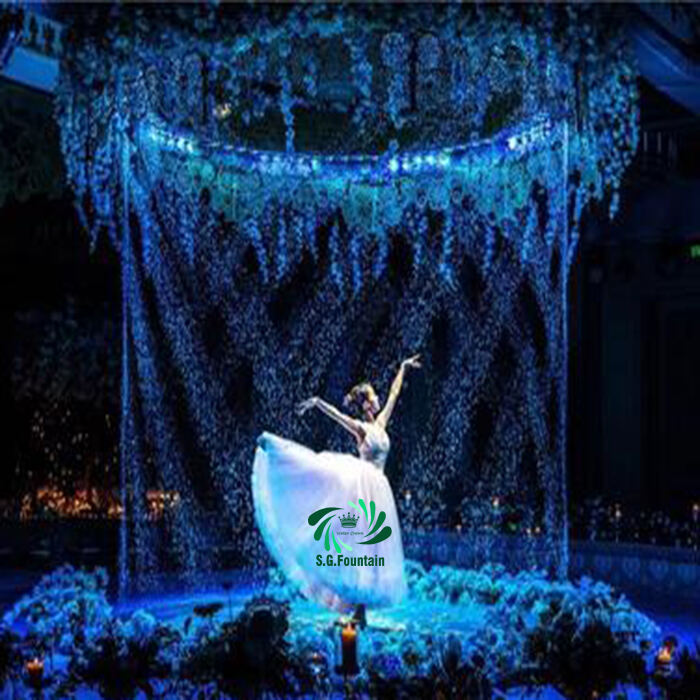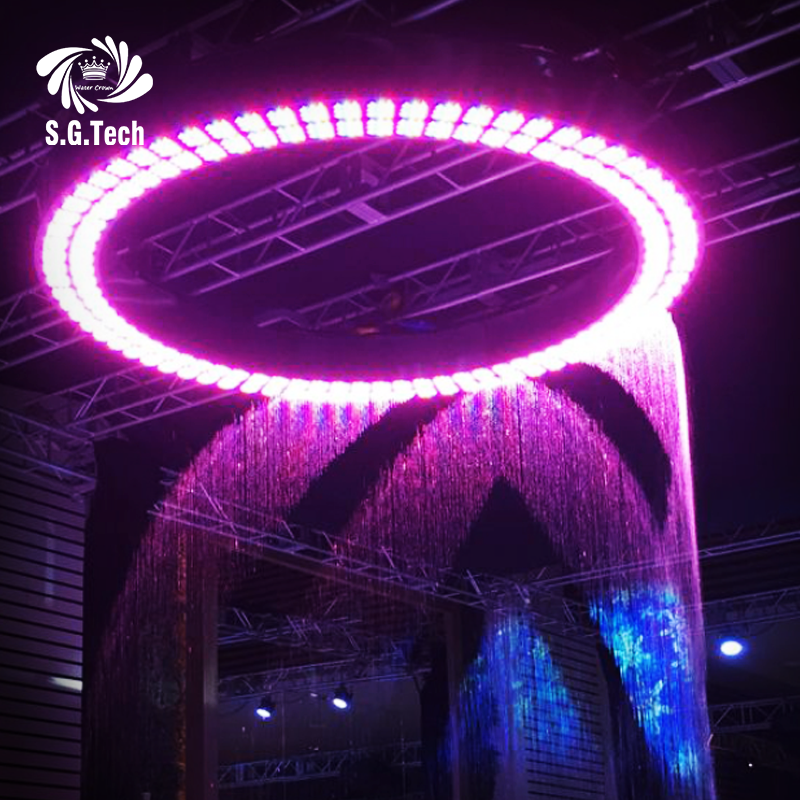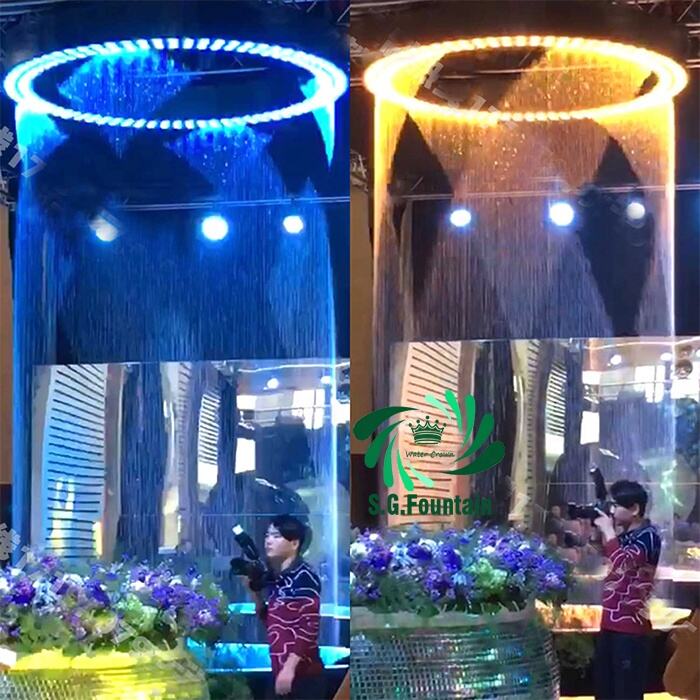
Interactive water curtain projection systems blend hydraulic architecture with motion sensing technology to create participatory installations. These systems use infrared or LiDAR sensors to detect human movement, translating gestures into real time changes in water flow and projected imagery. The water curtain serves as a transparent projection screen, with high brightness projectors (15,000+ lumens) casting graphics that interact with physical movements—for example, waving a hand creates ripples in the projected image that correspond to water jet adjustments. Calibration software maps sensor coordinates to water nozzle positions, ensuring minimal latency (under 100ms) between action and response. Interactive elements can include touchless games, where users "catch" projected objects by manipulating water streams, or educational displays that visualize scientific concepts through water animations. Safety features like emergency stop buttons and sensor fail safes prevent accidental water discharges. Installation requires precise alignment of projectors and sensors, with anti reflective coatings on water surfaces to enhance image contrast. These systems excel in public spaces, museums, or event venues, fostering audience engagement through tangible, immersive interactions.


